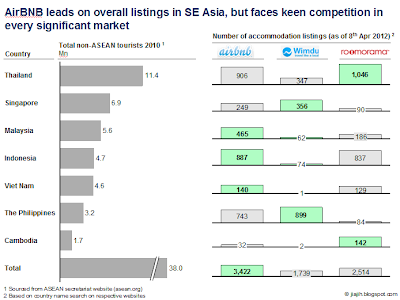Two parts of this post, one on AdBlock, the product.
The other part with my thoughts on the potential implications of online ad blocking.
I installed the popular AdBlock extension to my Chrome browser and realised how much difference it makes to the browsing experience on some sites.
The extension seamlessly removes ads off any websites you browse, reducing the clutter significantly. It also does the same for video ads, so YouTube pre-roll ads are skipped and it removes the in-video text ads too.
It comes with a simple but good-enough set of options, including which sites to apply ad-blocking, temporary pause ad blocking and lets you edit and add advertisement filter lists.
For Firefox users, there's Adblock Plus.
For Safari users, there's Safari AdBlock.
For IE (why are you using this??) , there's Simple Adblock.
Here's an example for Facebook before and after:
Here's an example for Google search. I've set it to allow ads for Google search though, since the ads tend to be quite relevant and aren't as intrusive as display ads.
Few thoughts as I use this...
Probably not a significant threat to the digital advertising business in the near term
There's already over 4 million users of AdBlock for Chrome and 12 million active users for the Firefox version. However, I don't think there'll be a significant enough usage of such blockers in the near term to really threaten the industry directly, plus the folks who have ad-blockers installed are likely to be those who don't click ads anyway.
"Independent" browsers could win in the longer run if ad-blocking becomes popular
In the scenario where ad-blocking becomes more mainstream, the browser wars would then tip in the favour of browsers like Safari and Opera where their parent companies don't rely as much on advertising for revenues.I'm impressed that Google has allowed this ad-blocking extension on Chrome, even though this directly threatens advertising revenues (over 98% of their 38Mn revenues last year). Still, I'm not sure they can do so if there is truly significant use of this - imagine the conversations between the Chrome product manager and the Search/Display ads product manager..
Arms-race between ad-blockers and advertisers in video ads space
The conflict between content-providers and ad-blockers could be more pronounced in the video ads space. These tend to be the ads that are more intrusive (e.g. pre-roll videos) and user would be more willing to pay to skip these. Meanwhile, for video content providers, these are the ads where number of impressions and length of engagement matter most since they're designed to build brand/product awareness for advertisers, very much in the same vein as traditional media advertisements.
This would then lead to competition to out-fox each other from technology perspective, with advertisers looking for ways to detect and prevent content delivery if blockers are found, while ad-blockers keep searching for new ways to provide the service while remaining undetected to content providers.





